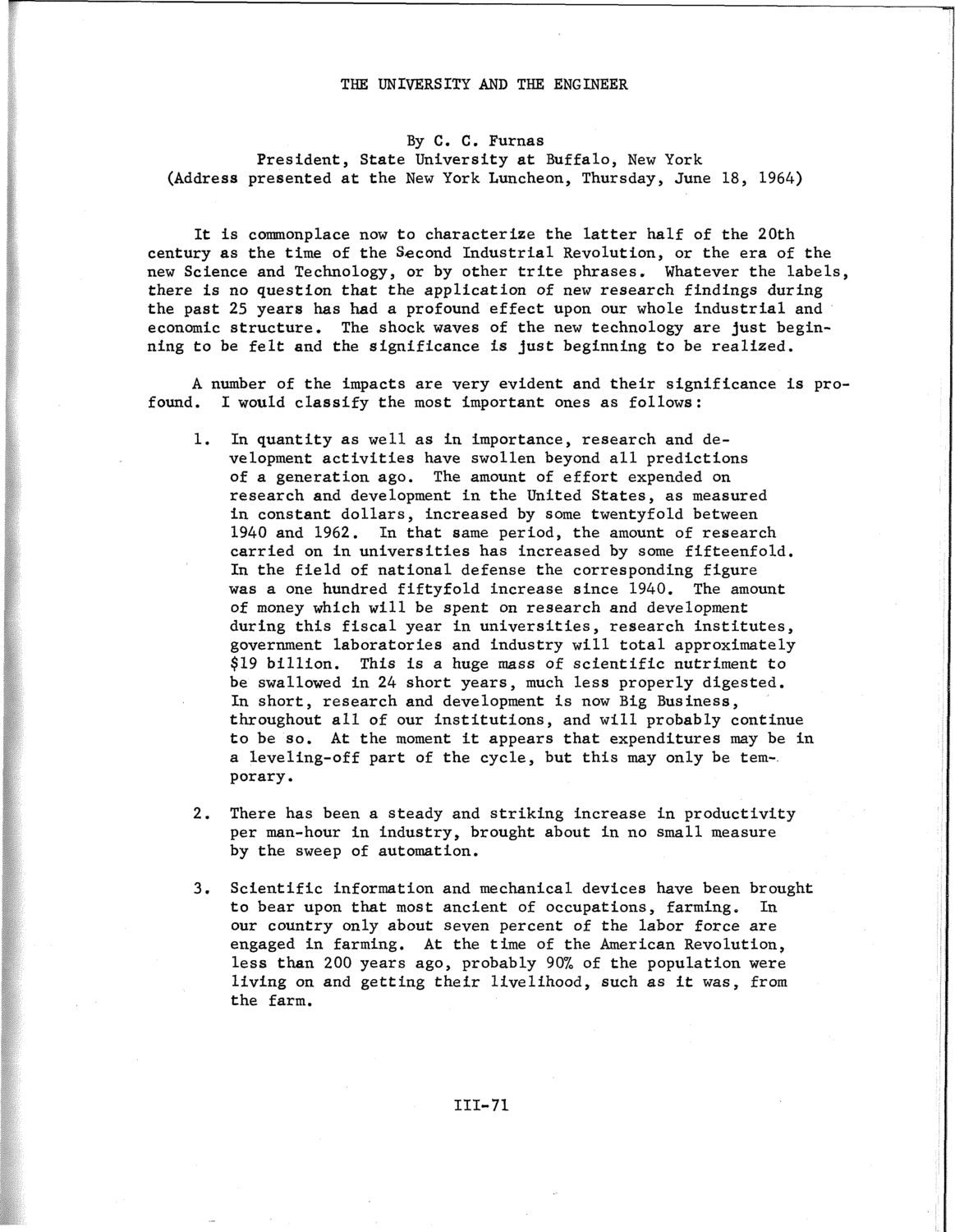| |
| |
Caption: SWE - Proceedings of the First International Conference of Women Engineers and Scientists
This is a reduced-resolution page image for fast online browsing.

EXTRACTED TEXT FROM PAGE:
THE UNIVERSITY AND THE ENGINEER By C. C. Furnas President, State University at Buffalo, New York (Address presented at the New York Luncheon, Thursday, June 18, 1964) It is commonplace now to characterize the latter half of the 20th century as the time of the Second Industrial Revolution, or the era of the new Science and Technology, or by other trite phrases. Whatever the labels, there is no question that the application of new research findings during the past 25 years has had a profound effect upon our whole industrial and economic structure. The shock waves of the new technology are just beginning to be felt and the significance is just beginning to be realized. A number of the impacts are very evident and their significance is profound. I would classify the most important ones as follows: 1. In quantity as well as in importance, research and development activities have swollen beyond all predictions of a generation ago. The amount of effort expended on research and development in the United States, as measured in constant dollars, increased by some twentyfold between 1940 and 1962. In that same period, the amount of research carried on in universities has increased by some fifteenfold. In the field of national defense the corresponding figure was a one hundred fiftyfold increase since 1940. The amount of money which will be spent on research and development during this fiscal year in universities, research institutes, government laboratories and industry will total approximately $19 billion. This is a huge mass of scientific nutriment to be swallowed in 24 short years, much less properly digested. In short, research and development is now Big Business, throughout all of our institutions, and will probably continue to be so. At the moment it appears that expenditures may be in a leveling-off part of the cycle, but this may only be tern-, porary. There has been a steady and striking increase in productivity per man-hour in industry, brought about in no small measure by the sweep of automation. Scientific information and mechanical devices have been brought to bear upon that most ancient of occupations, farming. In our country only about seven percent of the labor force are engaged in farming. At the time of the American Revolution, less than 200 years ago, probably 907o of the population were living on and getting their livelihood, such as it was, from the farm. 2. 3. 111-71
| |